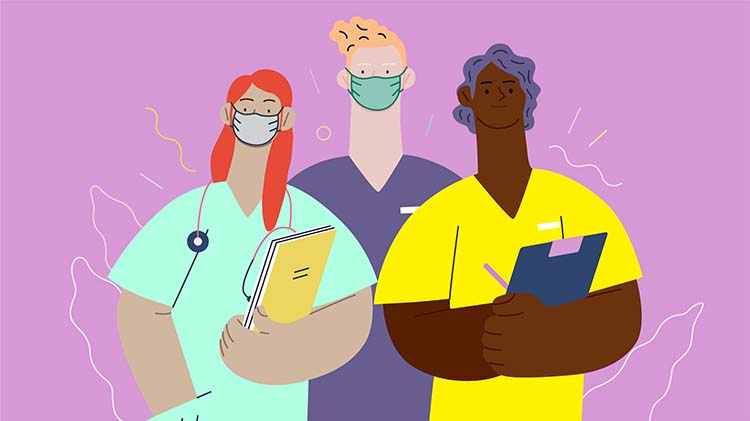Is it time for a second opinion
01 Jun 2022

Whilst dependent on the clinical situation, there may be benefits to this – particularly when there is diagnostic uncertainty. This was shown in a retrospective study by the Mayo Clinic in 2017 finding that in one in five cases, the final diagnoses were distinctly different than referral diagnoses.1
Doctor-initiated second opinions
The term ‘second opinion’ has traditionally been considered to mean when a doctor seeks the opinion of a colleague to assist in a patient’s management.
This may occur in the context of a complex, poorly defined or uncommon case. Asking a colleague to see and review a patient may help reassure you to continue the current plan or consider other options in managing the patient.
Occasionally, you may need to stop and consider if you are the right person to provide the care. For example, there may be treatments or procedures you feel comfortable in providing. However, you may be unsure whether the plan is best for you or best for the patient’s specific circumstances. This situation can sometimes occur when there has been a complication after a procedure. Are there options outside your area of expertise where the opinion of a colleague can assist?
There are times when you may be concerned about a breakdown in communication with the patient, or you feel the patient is not accepting of your recommendations. In these situations, it can be helpful to suggest a second opinion to show you’ve taken steps to seek advice on the most appropriate treatment options and allow the patient an opportunity to obtain further advice.
High-risk surgeries and experimental procedures are other instances where a second opinion would be worthwhile.
Patient-initiated second opinions
There may be several factors that could motivate a patient to seek a second opinion – including confirming a diagnosis or treatment plan, dissatisfaction with previous advice, a desire for more information, treatment complications, and consideration of treatment costs.2,3
Patients have the right to seek a second opinion if they wish4 and this is supported by the Medical Board’s Code of Conduct5 which states:
Good medical practice involves …
3.2.10
Supporting the patient’s right to seek a second opinion.
3.3
Shared decision-making: Makingdecisions about healthcare is the shared responsibility of the doctor and the patient.
Communication and privacy
Problems may arise when a patient seeks a second opinion from you, but is not aware that you might be contacting the initial treating doctor for further information.
While most patients would reasonably expect6 you to communicate with the initial treating doctor, it’s good practice to obtain the patient’s express consent before doing so. It may be a red flag if the patient is unwilling to provide consent.
Remember to document the patient’s consent, the second opinion, and all relevant information in the patient’s medical record.
Respecting colleagues
If you’re asked to provide a second opinion, it’s important to respect not only the patient but also the initial treating doctor. Disparaging and off-the-cuff comments can lead to a complaint or claim against the initial treating doctor, even though the care provided was entirely appropriate.
Remember – the patient may be providing a history that isn’t completely accurate and further clinical information may need to be obtained where possible.
Second opinions can be helpful to both patients and doctors to provide reassurance or a fresh perspective on a complex or difficult clinical situation. It’s important to keep the patient’s best interests in mind, be clear with expectations, and communicate clearly and courteously with both patients and colleagues.
References
1. Wiley Online Library. Extent of diagnostic agreement among medical referrals: onlinelibrary.wiley.com/doi/abs/10.1111/jep.12747 [accessed 21 March 2022]
2. Mayo Clinic Proceedings. Patient-initiated second opinions: systematic review of characteristics and impact on diagnosis, treatment and satisfaction: mayoclinicproceedings.org/article/S0025-6196%2814%2900245-6/fulltext [accessed 21 March 2022]
3. Choice. Why it’s worth getting a second medical opinion: choice.com.au/health-and-body/health-practitioners/doctors/articles/getting-a-second-medical-opinion [accessed 21 March 2022]
4. Australian Commission on Safety and Quality in Health Care. Australian Charter of Healthcare Rights: safetyandquality.gov.au/consumers/working-your-healthcare-provider/australian-charter-healthcare-rights
5. Medical Board. Good medical practice: a code of conduct for doctors in Australia: medicalboard.gov.au/codes-guidelines-policies/code-of-conduct.aspx
6. OAIC. Guide to health privacy: oaic.gov.au/privacy/guidance-and-advice/guide-to-health-privacy/chapter-3-using-or-disclosing-health-information
Stay updated with the latest medico-legal content |
Subscribe to MDA National’s biannual Member publication, Defence Update, for the latest medico-legal updates, articles and case studies.
Professional boundaries in healthcare - Part 1
Boundaries with patients present in numerous ways every day and all health practitioners
11 Aug 2025
Understanding Professional Medical Indemnity Insurance
Do you understand the ins and outs of professional medical indemnity insurance?
11 Aug 2025
Professional boundaries in healthcare - Part 2
Boundaries with patients present in numerous ways every day and all health practitioners
11 Aug 2025
Understanding changes to the Fair Work Act
What are the changes to the Fair Work Act and what is my role?
22 Jul 2025







